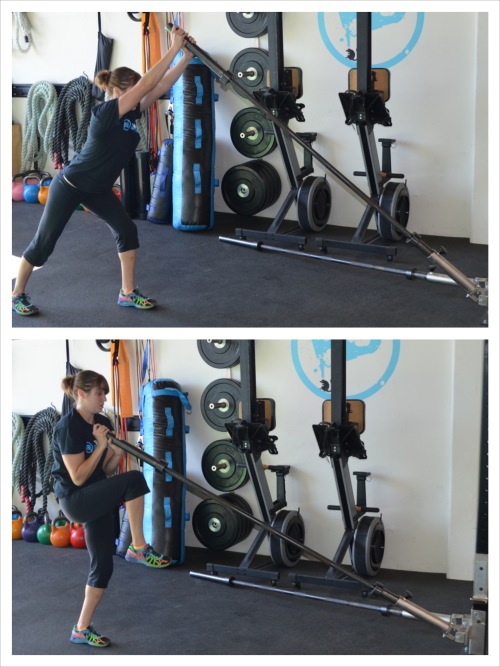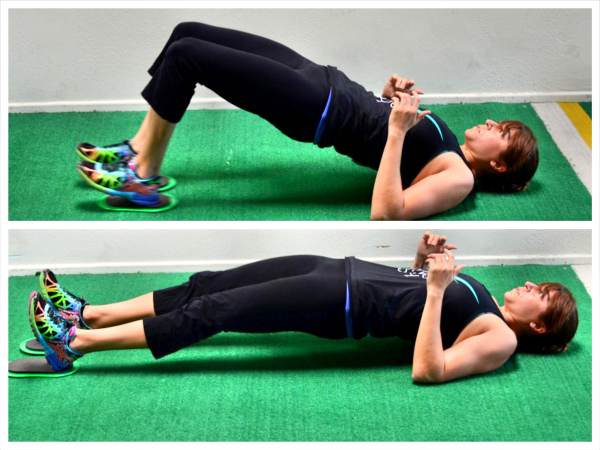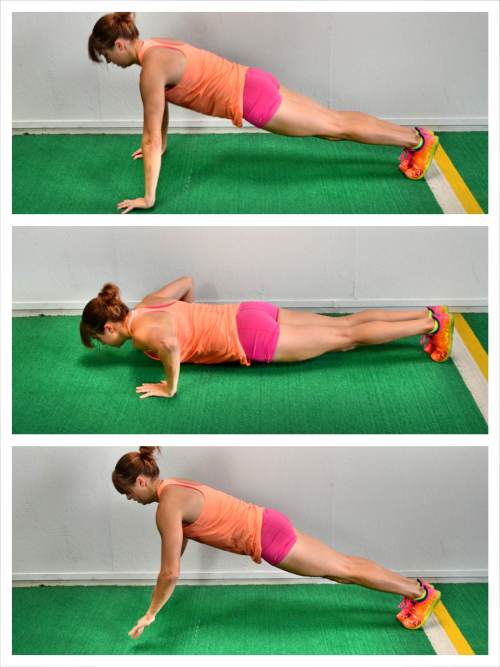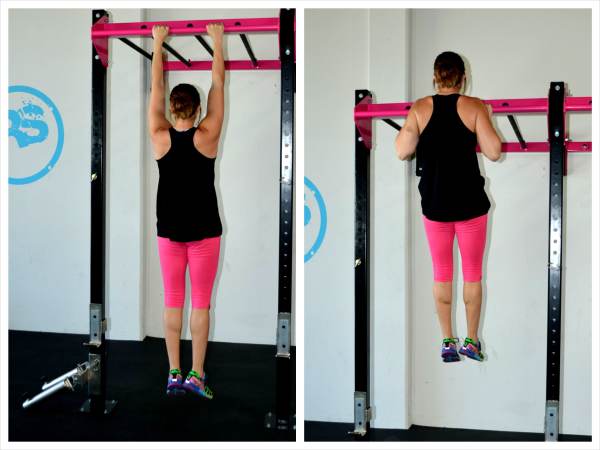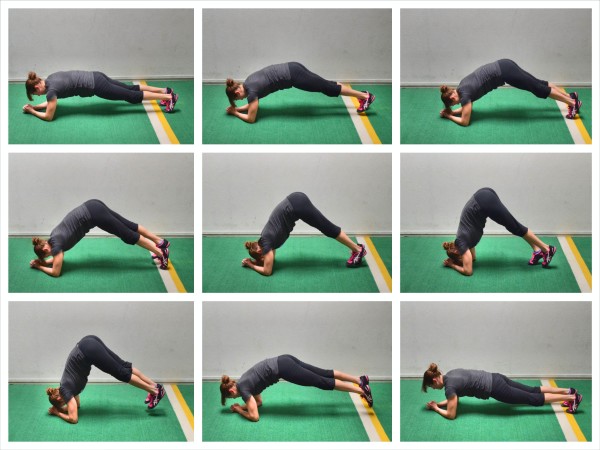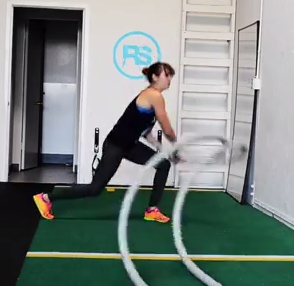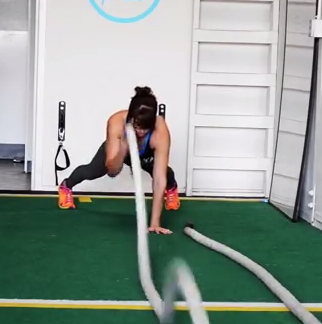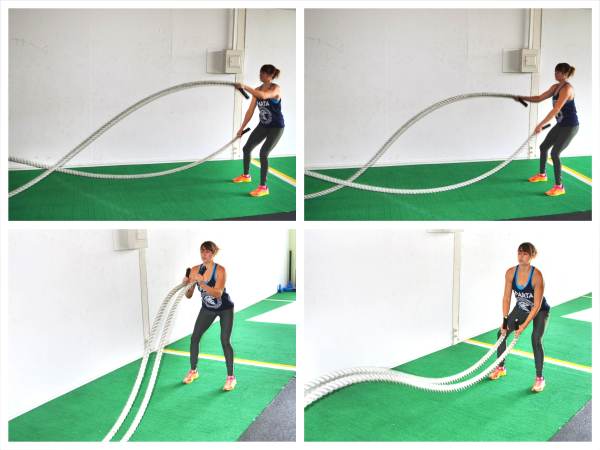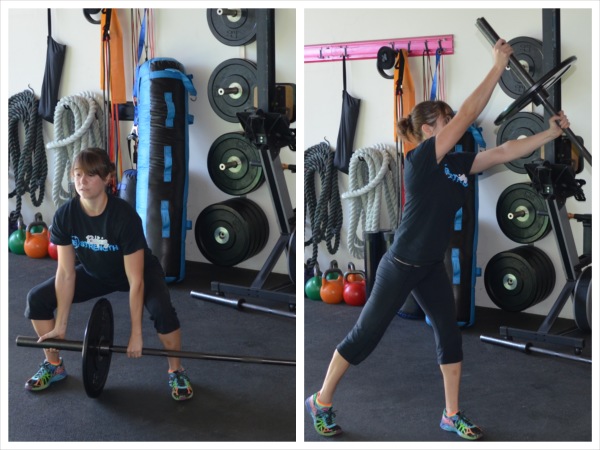
The 30-Minute Landmine Cardio Workout
WARM UP
Stretch and Roll Out:
Calves
Hamstrings
Quads
Groin
Hips/Glutes
Back/Lats
Chest/Shoulders
Wrist/Forearms
WORKOUT
Set a timer for 20 second intervals. Work on one exercise for 20 seconds then switch to the second exercise (or side if the move is unilateral) then rest 20 seconds before repeating the circuit. Complete 5 rounds of each circuit then rest for 1-2 minutes before moving on to the next circuit. This workout with a quick warm up and cool down shouldn’t take you longer than 30 minutes!
CIRCUIT #1:
20 seconds (Right) Lunge to Press
20 seconds (Left) Lunge to Press
20 seconds Rest
CIRCUIT #2:
20 seconds Landmine Burpee
20 seconds Ab Twists
20 seconds Rest
CIRCUIT #3:
20 seconds (Right) Rotational Deadlift Press
20 seconds (Left) Rotational Deadlift Press
20 seconds Rest
CIRCUIT #4:
20 seconds (Right) Standing Knees
20 seconds (Left) Standing Knees
20 seconds Rest
COOL DOWN
Stretch and Roll Out:
Calves
Hamstrings
Quads
Groin
Hips/Glutes
Back/Lats
Chest/Shoulders
Wrist/Forearms
NOTES:
Adjust weight as needed. You want to start light and make sure that even as you add weight you can move quickly and really work the entire 20 seconds. Remember to rest only 20 seconds after the two exercises and then 1-2 minutes after all five rounds are completed.
EXERCISE DESCRIPTIONS:
Lunge to Press – Grab the barbell in one hand and face the Landmine. Bring your hand up to your shoulder. Then lunge back on the side holding the barbell. Keep your chest up as you lunge back and make sure to sit back into that front heel. Do not go up onto your front toe. As you come back up to standing, drive through that front heel and press the barbell up overhead. Fully extend your arm. Then bring the barbell back down to your shoulder and repeat, lunging back again on the same side. Complete all reps on one side before switching. Keep your chest up tall and your abs braced through the entire movement. Do not lean toward the side holding the barbell. Because your legs will also be helping you press if move straight from the lunge to the press, you may find you can also use a bit more weight.
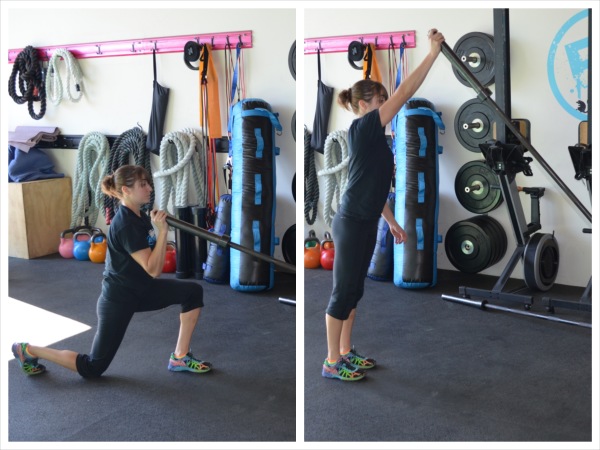
Landmine Burpee – Hold the barbell in both hands at chest height. Stand with your feet about hip-width to shoulder-width apart. Press the barbell quickly overhead. Then squat down and lower the barbell down to the ground. Place the barbell on the ground and then place your hands on the ground besides the barbell. Jump your feet back so that you are in the high plank position. Then jump your feet back in about shoulder-width apart so that you are in a squat. Pick up the barbell while in the squat and bring it up to your chest. Stand back up and press the barbell overhead to repeat the burpee. Make sure to use your legs as you pick up and lower the barbell to the ground. You don’t want to use only your back to lift especially as you add weight!

Ab Twists – Hold the barbell in both hands at shoulder height with your feet about hip-width to shoulder-width apart. Press the bar overhead. Keeping your arms straight and your shoulders down (do not shrug), lower the bar down toward one hip, pivoting your back foot as you lower the bar. Then, pivot back forward, bringing the bar back up center. Then drop the bar down toward the other hip, pivoting the back foot as you rotate. When the bar is lighter you can move very slowly and work on stability. Make sure that you still pivot your back foot to keep your hip, knee and ankle in proper alignment. As the bar gets heavier (and if you want to make this move more explosive), you will want to get your legs and hips more involved and really “pop” the bar up off your hip to drive it to the other hip. You will pivot hard to use the legs to twist the bar from hip to hip. With both moves, make sure to brace your abs as if preparing to be punched to protect your low back during the movement.
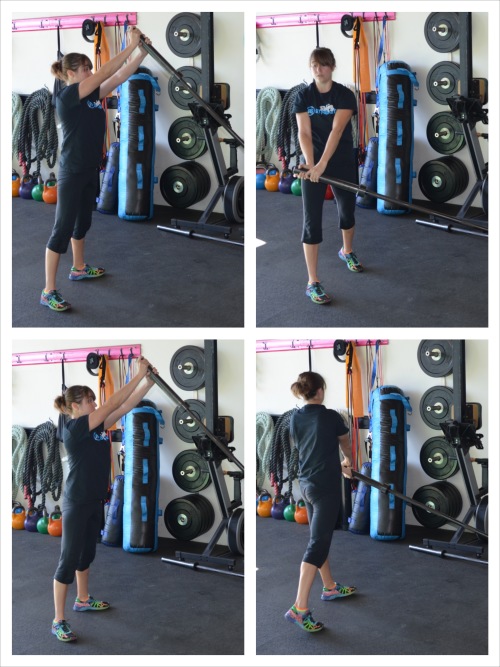
Rotational Deadlift Press – Stand at the end of the barbell facing the barbell, sideways to the Landmine anchor. Grab toward the very end of the barbell with an overhead grip and almost at the end of the barbell with an underhand grip. Your hands on the barbell should be about shoulder-width apart. Stand facing the barbell with your feet about shoulder-width apart. They may even be a bit wider. Hinge over like with a deadlift, bending your knees and sinking your butt while keeping your chest up and arms straight. Make sure your heels stay on the ground as you sink your butt. With your arms straight down holding the bar, pull up just slightly so there is tension on the bar before you lift. Your arms will be inside your legs and your shins should be right up against the bar. Then quickly stand up out of the deadlift and as you do, rotate toward the Landmine attachment and press the bar across and overhead. Your back foot, the foot closest to the end of the barbell, should pivot as you rotate and press across. Then bring the bar back down and sink back into a deadlift. Do not just lean over to bring the barbell back down to the ground. Sink your butt back down to drop the bar back down. Move slowly back down then explosively to bring the weight back up and across. Use your legs to power your press up and across. Complete all reps on one side before switching. Make sure you are using your legs to lift the barbell and not your back. Keep your abs braced and a nice tall posture through the movement. You want to power the deadlift and even the rotational press with your glutes not your low back.

Standing Knees – Stand facing the Landmine with the barbell in both hands. Press the barbell up overhead and move back behind the barbell. Set up in a staggered stance with one leg straight back. Then pull the weight down and toward the side of the foot that is staggered back. As you pull the weight down, bring that knee up and in toward your chest. Pull the weight and drive the knee toward each other. Crunch slightly as you bring the two together. Then quickly press back overhead and put the knee back down, driving the foot back into the staggered stance. Again, quickly pull the weight down and drive the knee up. Move quickly and explosively. Complete all reps on one side before switching. If you find you can’t bring the knee close to the bar, you may be in too close to the barbell and need to set up a little more behind it. Start light as this move will challenge your balance more than you realize. Keep your abs braced the entire time so that you don’t feel this move in your low back.
